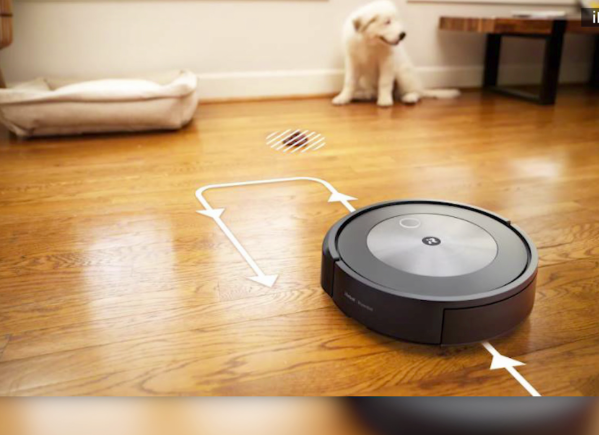Can a Robot Vacuum Avoid Dog Poop?
If you have pets especially dogs one of the worst things that can happen is your robotic cleaner running over a freshly dropped surprise. Not only is it messy, but it can damage the vacuum, spread unpleasant odors everywhere, and create a big clean-up headache.
So: can robot vacuums detect and avoid dog poop? The short answer is: not reliably yet. But developments in sensors, AI, mapping, and avoidance algorithms are making them increasingly more capable. Below I’ll walk through where things stand, what to watch out for, and how you can reduce your risk. Then I’ll introduce how MOVA robot vacuum lineup stacks up in this area, and whether they might help.
The Poopocalypse: Why Basic Robot Vacuums Fail
Traditional and budget-friendly robot vacuums navigate using random patterns, basic bump sensors, and sometimes cliff sensors to avoid falls. They operate on a simple principle: bump into something, turn around, and keep going.
This method is disastrous when the obstacle is dog waste.
- Bump Sensors are Useless: By the time the vacuum bumps into the poop, the damage is already done. The soft object is smeared across the bumper and the wheels before the robot even registers an obstacle and changes direction.
- No Object Recognition: Basic robots see the world in binary: is there an obstacle or isn’t there? They cannot distinguish between a harmless sock, a dangerous cable, a valuable pet toy, and a catastrophic pile of poop. It’s all just an “object” to be bumped into or avoided from a distance.
This is why a quick search online reveals horror stories and “my Roomba ran over dog poop” memes. It’s the Achilles’ heel of dumb robots.
The Rise of the Machines: How Smart Vacuums Avoid Disasters
The game-changer for pet owners is the advent of AI-powered object recognition and precision navigation. High-end robot vacuums now come equipped with sophisticated camera- or LIDAR-based systems that don’t just map your home—they understand what’s in it.
Here’s how the smart ones avoid creating a mess:
- LIDAR Navigation: Light Detection and Ranging sensors create a precise, inch-by-inch map of your home. This allows the robot to navigate efficiently in neat, logical paths (like cleaning in neat rows) rather than random bouncing. While LIDAR is excellent for mapping room layouts and avoiding large obstacles like furniture, it doesn’t inherently recognize specific objects like poop.
- AI-Powered Camera Vision: This is the true hero for pet owners. These robots are equipped with a forward-facing camera that continuously scans the floor ahead. Using sophisticated artificial intelligence and machine learning algorithms, the robot compares what it sees to a vast database of images.
- It’s not just looking for obstacles; it’s identifying them. The AI can be trained to recognize pet waste, cables, socks, shoes, and even liquid spills.
- When it identifies a prohibited object like dog poop, it will mark it on its map, give it a wide berth (often several inches), and continue cleaning around it. Some models will even send you an alert with a picture to your smartphone: “Obstacle detected and avoided.”
- ToF (Time-of-Flight) Sensors: Some models use ToF sensors to create detailed 3D images of objects, further improving their ability to judge the size, shape, and nature of an obstacle before getting too close.
Choosing the Right Robot Vacuum for Pet Owners
If you’re a pet owner in the market for a robot vacuum, your checklist should prioritize intelligence over brute suction power. You need a model that boasts:
- Advanced Object Recognition: This is the non-negotiable feature. Look for explicit mention of “pet waste avoidance,” “object recognition,” or “AI obstacle avoidance.”
- Precision Mapping: LIDAR or advanced visual mapping (vSLAM) is essential for efficient cleaning and for allowing you to set “No-Go Zones” in your app around your dog’s favorite potty area or food bowl.
- Strong Suction and Tangle-Free Brushes: Of course, you still need powerful suction for pet hair and a brush system designed to resist tangles from long dog hair.
Recommendation: Smart Cleaning Solutions from MOVA Tech
For pet owners seeking a reliable and intelligent solution, it’s crucial to choose a retailer that curates models equipped with the latest avoidance technology. MOVA Tech offers a selection of top-tier robot vacuums that are specifically designed to handle the challenges of a pet-friendly household.
Their collection features models from leading brands that incorporate the very AI camera and LIDAR systems we’ve discussed. By shopping at MOVA Tech, you can easily filter and find robots with advanced obstacle avoidance, ensuring you invest in a machine that will clean your home without creating a catastrophic mess.
Explore their range of intelligent robot vacuums to find the perfect model that gives you peace of mind and a clean floor. Check out their collection here: MOVA Tech Robot Vacuums
Conclusion: Peace of Mind is Possible
So, can a robot vacuum avoid dog poop? Yes, but only if it’s a smart model equipped with AI-powered object recognition. While no system is perfect, this technology has advanced leaps and bounds, transforming the robot vacuum from a potential liability into a trusted, intelligent helper for pet owners.
By understanding the technology, maintaining good habits (like a pre-cleaning scan), and choosing a capable model from a reputable retailer like MOVA Tech, you can confidently automate your cleaning routine. You can finally enjoy the benefits of a robot vacuum—a significant reduction in daily pet hair and dirt—without the lingering fear of a poopocalypse. That’s a future worth investing in.

